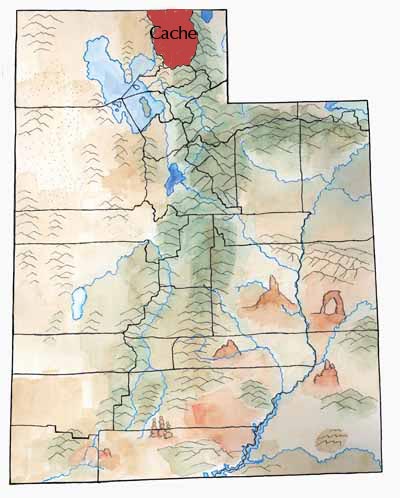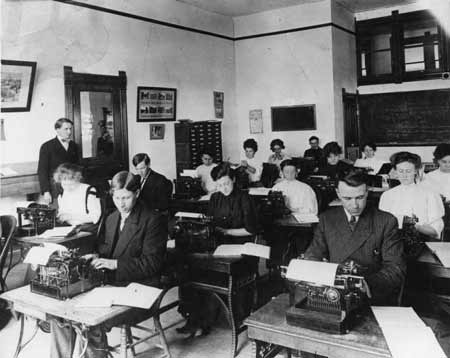
Cache County, located at the northern edge of Utah, is a land of mountains and a green, fertile valley. The Wasatch Mountains border the county on the east, and a spur of the Wasatch, the steep Wellsville Mountains, border it on the west.
The Bear River flows through the northwestern corner of the county. The Little Bear, Blacksmith Fork, and Logan rivers add their waters to the Bear.
First Peoples
Native American hunters and gatherers occupied Cache Valley as early as 10,000 years ago. Much later, the valley served as a gathering place for Plains Indians and the local Shoshone.
Trappers and explorers frequently visited the valley. John Weber and Jim Bridger came through in 1824; Peter Skene Ogden and James Beckwourth followed in 1825.
Euro-American Settlers
In July 1855 a group of Mormon settlers drove a herd of cattle into the valley and camped at Haw Bush Spring, later known as Elkhorn Ranch.

Summer was lovely, but the winter of 1855-56 was so ferocious that the settlers gave up and drove the cattle back to the Salt Lake Valley.
But in 1856 the LDS church sent Peter Maughan to settle Cache Valley for good. He founded a town called Maughan’s Fort, now called Wellsville. More settlers began to arrive. By 1859 they had formed five more towns: Providence, Mendon, Logan, Richmond, and Smithfield.
The territorial legislature created a large Cache County in 1856. Eight years later, the legislators split off the eastern part of the county to form Richland (now Rich) County.
Economy
In early 1873, the Utah Northern Railroad between Brigham City and Logan was completed. Later, this railroad extended into Idaho and also connected to the transcontinental railroad. The presence of the railroad helped Cache residents to prosper. It provided jobs and also opened new markets for their crops, especially grain and dairy products.

By the 1880s, Cache County farmers were doing even better. They were using new dry-farming techniques and new techniques for building canals and reservoirs. They began to sell fruits and vegetables. New grain elevators built in the 1890s let them store their crops and wait for good prices before they sold.
Meanwhile, the county’s sheep population exploded—from 10,000 in 1880 to 300,000 by 1900. Sheep owners made lots of money, but all those sheep eating and trampling vegetation damaged the valleys and canyons. Around this time the Forest Service began to regulate grazing.
By 1910, 16,000 dairy cows lived in the county. Commercial creameries, flour mills, woolen mills, and knitting factories developed around Cache’s booming turn-of-the century farm production. Today, Cache continues as the state’s leader in dairy products and as a major producer of hay, alfalfa, and grain.
In 1888 the founding of Utah State Agricultural College (now Utah State University) in Logan provided an important key to the county’s future. USU’s scientific research, agricultural extension services, and experimental farms have benefited farmers locally and in every part of the state.
With over 28,000 students currently enrolled, USU has grown to be the county’s largest single employer—and a major cultural resource for the community.
Today, Cache County’s economy also includes manufacturing, retail trade, and services (including government services).
Did you Know?
| Fur trapper Osborn Russell met some Shoshone people in Cache Valley in 1841 and wrote about it in his journal. |
| Army troops attacked a peaceful encampment of Shoshone in 1863 called the Bear River Massacre |
| Military pilots trained at Utah Agricultural College (USU) during World War II |
| Legend claims that giant grizzly bear named Old Ephraim had only three toes on one foot. He was killed in 1923. |
| The county recorded second lowest temperature (minus 69.3 degrees ) in the lower 48 states |
Fast Facts
Where the County Got Its Name: French verb cacher that means “to hide” because early fur trappers hid their pelts and supplies in the area for safe-keeping.
Main Cities and Towns: Logan, Smithfield, Providence, North Logan
Economy: Manufacturing, trade, education, agriculture, dairying
Tourist Destinations: Cache National Forest, Logan Canyon, Utah state University, Beaver Mountain Ski Area
Keep Exploring!
Return to the Counties home page here.
Return to the I Love Utah History home page here.